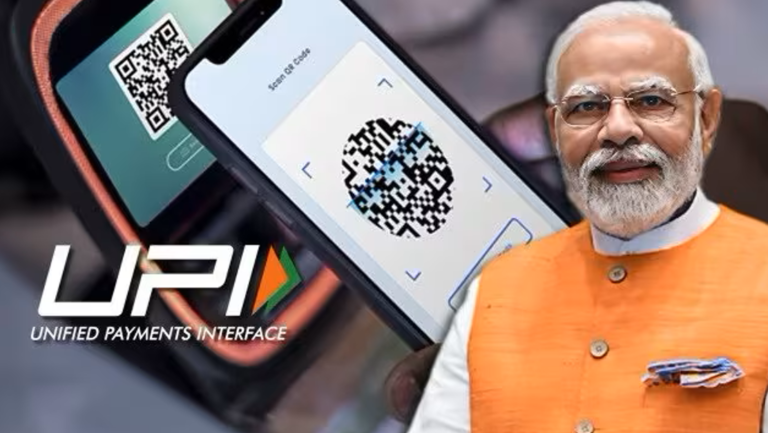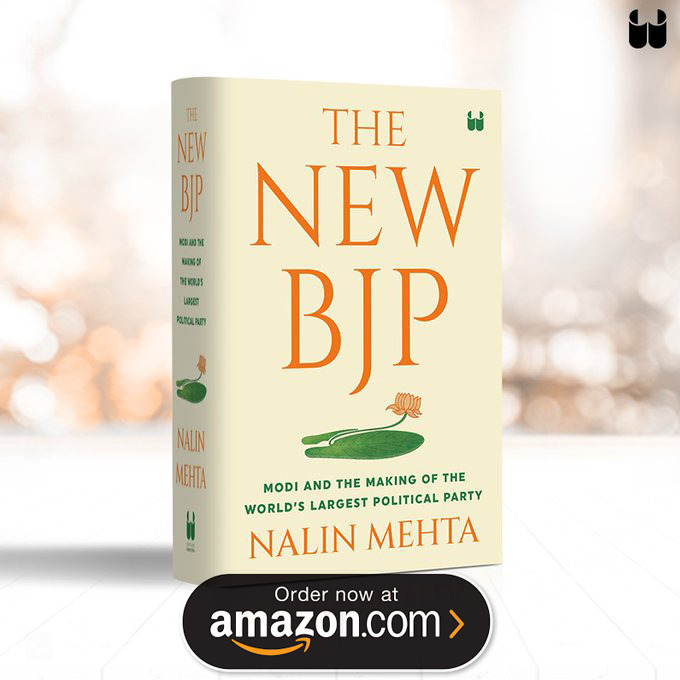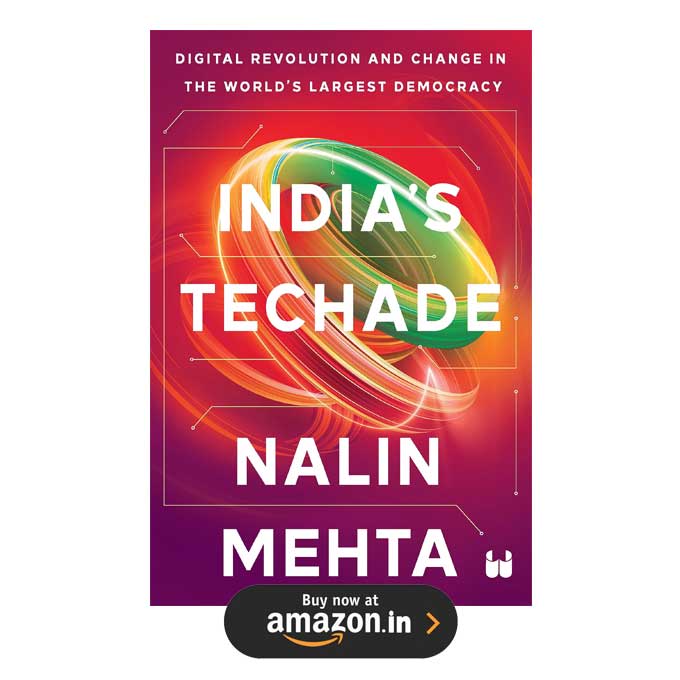This interview was first published on firstpost.com | October 29, 2023
After India’s economic reforms that were initiated in the early 90s, the biggest revolution that India witnessed in the last few decades is its digital revolution. India’s Techade by journalist and author Nalin Mehta chronicles the trajectory of this revolution. Mehta’s last book was The New BJP: Modi and the Making of the World’s Largest Political Party and it was in a way this book that led to the writing of India’s Techade.
Mehta tells the Firstpost, “So while writing ‘The New BJP’ one of the things that I encountered was how a significant part of our polity changed because of Direct Benefit Transfers (DBT). And how that contributed significantly to the expansion of the BJP’s base. Now in that book, I was looking at this from the lens of politics, political change and subterranean shifts. But I felt that this was such a huge underlying thing, a revolutionary transformation in our society, that I wanted to look at it more deeply and in an expansive sense, leaving aside the lens of politics and looking at it from a technology and social change point of view. I wanted to look at how this happened and where it is leading. For example, what happened with UPI? How did the UPI story emerge? Where is that going? I wanted to change the lenses and look at it more deeply.”

Mehta writes in the book that it “is a small book about big disruptions” and indeed, it is. Differentiating India’s digital revolution from that of other countries Mehta writes, “Digital disruptions are often seen as synonymous with the American Silicon Valley or, more broadly, with the West. Even more so, with private companies like, say Google or Meta.
Yet, According to Mehta, India’s digital revolution was “largely created through the actions of State and public institutions”.
Mehta provides significant data to highlight how this digital revolution took place and how it is scaling new heights. He writes, “It is a revolution that has profound implications for the rest of the world and for the future of Global Tech itself. In a little over a decade, India built a melange of public digital platforms that have transformed lives. The India Stack, or Digital Public Infrastructure, is held up by three pillars: Identity, payments and data management. Its base was laid with the Aadhaar biometric identity system created under the Manmohan Singh-led Congress government in 2009. By December 2022, India had 1.35 billion Aadhaar enrollments.”
“This was followed by the building of systems like UPI, which made digital payments as easy as sending SMS on your mobile phone or scanning a QR code. In August 2023, India recorded 10.58 billion UPI transactions worth Rs 15,18,456.4 crore. UPI accounted for as much as 73 per cent of all non-cash retail transactions. To put this in perspective in global terms, this meant that India was now home to 46 per cent of the world’s real-time digital payment transactions,” says Mehta.
India’s digital revolution has stunned people across the globe. It has reached remote areas.
On being asked what was the turning point in this revolution, Mehta says, “You know, the digital revolution, as argued in the book, is a unique combination of the cheap mobile phone, cheap data, a unique digital ID system. All of these things coming together led to a whole bunch of revolutionary changes from DBT to multiple things. Aadhaar was launched under the Manmohan Singh regime and there was a significant number of Aadhaar numbers when Narendra Modi came to power. And Modi had not been in favour of this before he came to power in 2014. And there was a serious conversation immediately after Modi came to power about the future of Aadhar.”
He adds, “But then this transformational meeting took place between Prime Minister Narendra Modi and Nandan Nilekani in July 2014, at which the Prime Minister listened to various perspectives, and then took a political decision. And I think that was the turning point. Fundamentally, what Narendra Modi did in 2014 is that he put his entire political capital behind the idea of a digital transformation. So, if you see in 2014 in his first Independence Day speech, he specifically talked about digital India and a month after the Independence Day speech, the Pradhan Mantri Jan Dhan Yojna (PMJDY) was announced which led to massive financial inclusion and almost half a billion people came into the banking net and that further led to expansion of DBT and so on. Technology can be a great enabler, but not alone, by itself. It needs the right conditions and scale. When initially the whole transformation started, nobody was very sure about the direction of change. There were a lot of debates around Aadhaar, and the Supreme Court eventually ruled in favour of it.”
“Nobody quite knew how DBTs would work. And by the way, DBT was initially started in the last year of the Manmohan Singh government, there were issues with it and by the time they were sorted out, Manmohan Singh lost power. So, if you ask me about a turning point, it was the coming up of a powerful prime minister who decided to back it with the full might and the right resources were put into it and it worked on a mission scale. So, it builds on what was already done before, but then it was done with an unmatched belief. The transformation was an expression of political will,” says the author.
The cynicism around UPI or the digital economy often stems from the fact that India has a huge population of poor and semi-literate people. How they would ensure this technology-backed transformation was the biggest question mark. However, it was this class of people who proved to be active participants and the biggest beneficiaries of this revolution.
When asked about who is the biggest beneficiary of this digital revolution, Mehta says, “India has always had very large numbers of poor and India has always had governments that have spent large amounts of money on the poor. The problem is that there were too many leakages on the way. Rajiv Gandhi’s famous quote ‘About every rupee that is spent by the government, only 15 paisa reaches the poor’ was a case in point. What this transformation did was to plug these leakages. During the peak of Covid-19, 800 million people were getting DBT of one kind or the other. And I think that fundamentally changed the relationship between the poor and the state. We have the beginnings of a new kind of welfare state. In the book, I call it Indian Welfare State 2.0. Because the scale at which it’s done was massive. Whether it was PM Awas Yojana, whether it was for Swachh Bharat, it was all done on a massive scale. For example, there are some 450 million plus people who came into the banking net with Jan Dhan accounts. No country in the world has ever done this. And because you reach the last mile and cut out so many of the layers, it is paradigmatically different from what came before, in terms of delivery.”
According to Mehta, in spite of initial cynicism, what worked in favour of the government which helped them to bring this kind of revolution was the presence of a powerful prime minister, who worked in a mission mode that made the chain of command very easy because they weren’t different parts of government fighting with each other for something.
Read the full interview on firstpost.com
This interview was first published on firstpost.com | October 29, 2023


